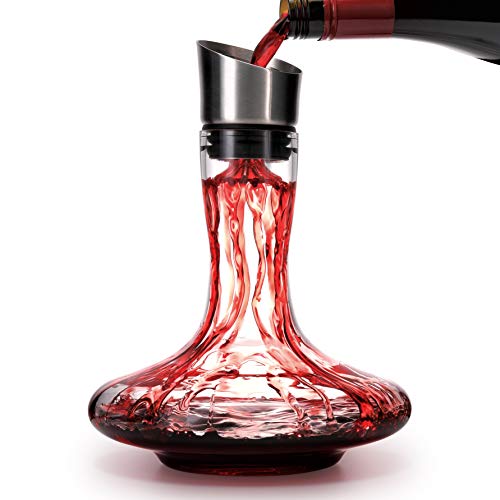Finding bits of sediment, in the bottom of your wine glass can leave you asking: Ah! Must be really natural. Does this mean my wine’s good?
Sediment in wine doesn’t mean it’s good, it means: 1) The winemaker didn’t stabilize the wine, 2) the winemaker didn’t fine the wine, or 3) the wine’s been in the bottle for a long time. The sediment won’t hurt you if you drink it and doesn’t have anything to do with the wine’s quality.
Here’s what you need to know about wine quality and wine sediment.
Wine Sediment Is Natural and Won’t Hurt You
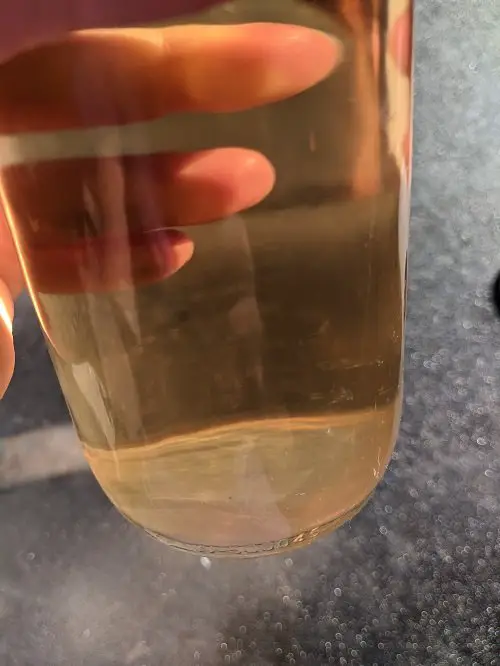
Wine sediment is a natural part of the winemaking process. When the grapes get crushed and pressed to squeeze out all of the juice, tiny particulates from the skin, seeds, and stems get mixed in with the juice.
These tiny particulates are suspended in the juice.
Still more particles get into the wine through fermentation with dead yeast cells.
Tip: Check out this helpful overview of how wine fermentation works.
Think of wine sediment like Italian salad dressing. Italian salad dressing has little bits of pepper, onion, or garlic resting on the bottom of the jar. If you shake up the dressing, everything combines. But as soon as you stop shaking, the little bits settle on the bottom.
Grape juice and wine act the same way as Italian salad dressing. There are little particulates floating around and, over time, they’ll slowly settle on the bottom of the barrel or tank. This is wine sediment.
Old Wines Have Sediment
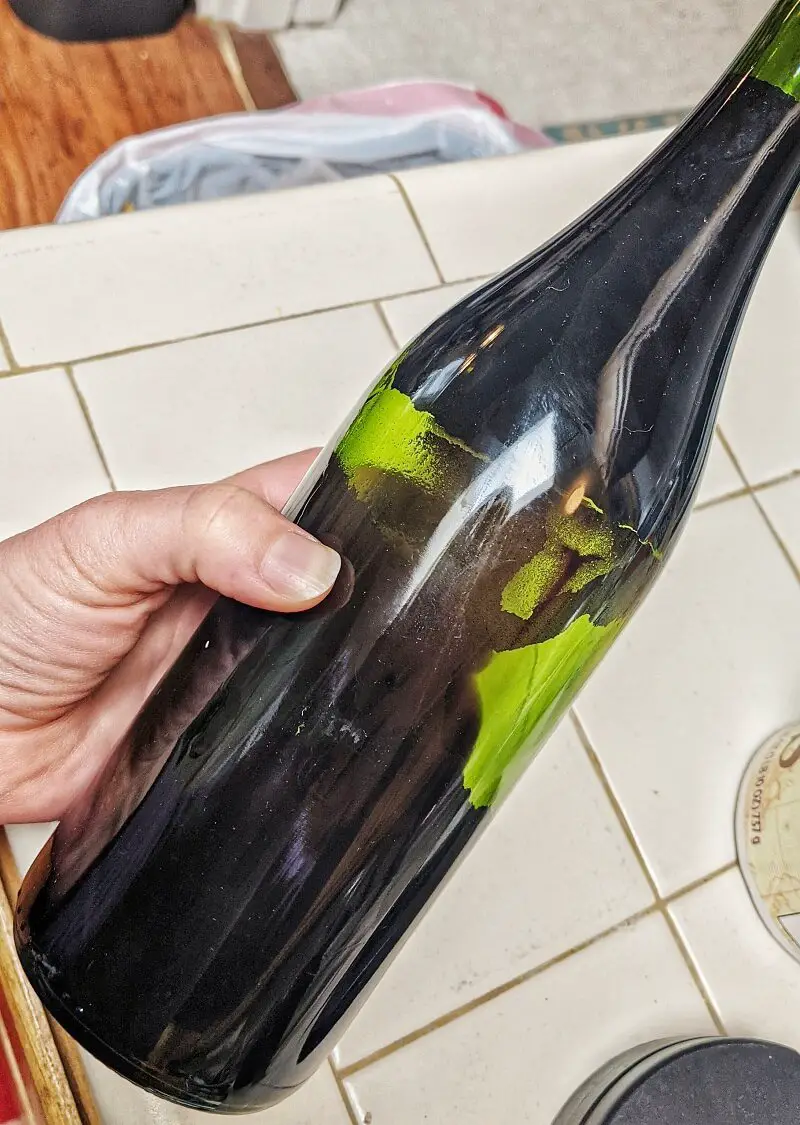
Your wine might be old if it has sediment. If you’re enjoying a red wine that’s older than 3-4 years, it’s likely to throw at least a little sediment.
Thanks to gravity, those small particles continue to bind and settle in the bottle, forming a fine, sandy layer of sediment.
Very old wines will have considerable sediment that can coat the inside of the bottle.
This is why most old wines get decanted before pouring them into your wine glass.
Unstabilized Wines Have Sediment
A wine that’s unstabilized can have sediment. Winemakers cold stabilize their wines to get rid of possible sediment back at the winery before the wine gets bottled and sent to you.
When they cold stabilize the wine, winemakers drop the temperature of the wine for several days and small crystals, called tartrate crystals, form on the bottom of the tank.
These tartrate crystals fall out of the solution and the winemaker takes the clean wine and bottles it.
Helpful Tip: Learn more about white wine crystals in this helpful post.
You’ll notice sediment in unstabilized white wines, but likely won’t notice it as much in red wines because of their darker color.
If the winemaker didn’t cold stabilize the wine back at the winery and your wine gets very cold for an extended period of time (several days), you may end up with tartrate crystals in your bottle.
Sediment in unstabilized white wines can look like crystals, shards of glass, or even like snowflakes in a snow globe. These are harmless and safe to drink, too.
Unfined Wines Have Sediment
Fining is a winemaking process where the winemaker puts an additive into the wine that has a positive or negative charge.
The additive can be egg white, pea powder, clay, or even gelatin. This substance binds to the floating particulates in the wine and makes them heavy enough to fall to the bottom of the barrel or tank.
The winemaker then takes the clean wine and bottles it up.
These little particles will naturally fall to the bottom of the tank or barrel with enough time (years) without any additives. But if the winemaker bottles a young wine without fining, then those particles will settle in the bottle and you’ll get wine sediment.
Many natural wines or low-intervention wines skip the fining step, so you’re likely to find more sediment in “natural” or low-intervention wines.
Heplpful Tip: Read more about how unfined and unfiltered wines work in this helpful post.
Why We Think Wines with Sediment Are Good
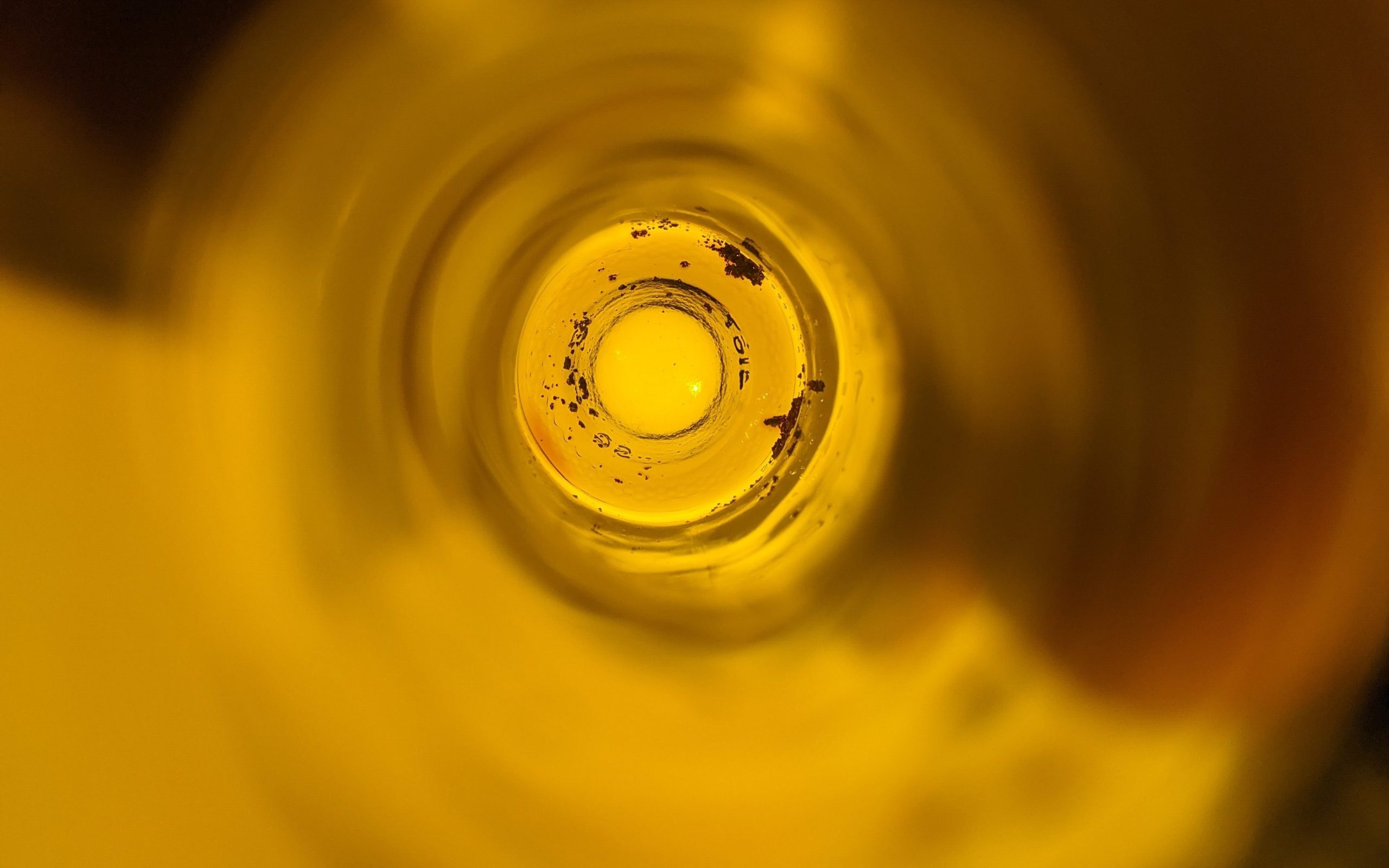
We want to think that wines with sediment are good because we automatically believe that these wines are natural with observable evidence of the winemaking process.
You can actually see the evidence of winemaking in your glass!
It has an earthy feel.
Pictures of beautiful vineyards and old barrels are part of effective wine marketing, making us believe that the wine and rhythms of the earth are deeply connected (they are, don’t get me wrong), but the sediment part is your brain making that quality connection between nature, wine, and health.
Just to be 100% clear: Wines with Sediment Aren’t More Natural or Healthier
Wines that have sediment aren’t more natural or healthier for you than wines without sediment.
You may want to believe that wines with sediment are more artisanal or have a certain rustic craftsmanship, but they’re not.
Wine is wine.
Winemaking is food manufacturing that comes from a complicated set of biochemical reactions, all of which wind up in your wine glass.
What to Do When a Wine Has Sediment
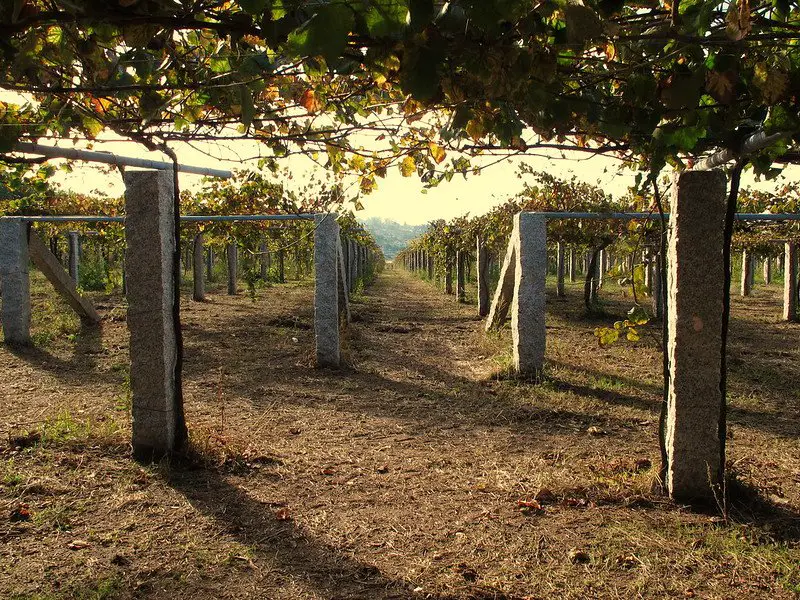
You can drink a wine with sediment safely. Wine sediment is 100% natural. If you don’t want to drink the sediment, then you’ll want to decant your wine or pour it off carefully.
Here’s the style of decanter I use (helpful tip, you can usually find used decanters at resale and thrift stores, too):
Wine Decanter Built-in Aerator Pourer, Wine Carafe Red Wine Decanter,100% Lead-free Crystal Glass, Wine Hand-held Aerator, Wine Gift, Wine AccessoriesBuy on Amazon
How to Decant Wine
- Place the bottle standing up on your counter for 2-4 days before pouring.
- Carefully uncork the bottle by firmly gripping the bottle and removing the cork with a waiter’s friend (corkscrew)
- Place your empty wine glass or decanter next to the open bottle.
- Gently pour off the wine into the glass or decanter.
- Watch the shoulder of the bottle (where the neck meets the main part of the bottle) for sediment.
- Stop pouring when the sediment pools in the shoulder.
Inexpensive Wines Won’t Have Sediment
Entry level, inexpensive wines won’t have sediment. The winemakers for inexpensive wines know that wine drinkers at this level in the market don’t want anything unexpected in their glasses.
The winemakers will fine, filter, stabilize, and polish their wines.
Inexpensive wines will be sparkling and crystalline.
Final Thoughts – Sediment in Wine is Fine
Sediment’s a natural byproduct of the winemaking process.
Most winemakers want their wine to be crystal clear in the bottle, but some will skip winemaking steps that minimize wine sediment.
Or, the wine you’re drinking may be old enough to leave natural sediment in your wine bottle which happens over time.
You can drink wine sediment and it won’t hurt you, or you can carefully decant your wine and leave the sediment in the bottle.
If you’re curious about wine sediment, look for an older bottle of wine or a ‘natural’ wine at a specialty wine shop and enjoy!
Thirsty for More?
Check out the difference between free run and press wine and how winemakers use both to craft amazing bottles.
Here’s an overview of how oak is used in winemaking, a must-know if you like wines that taste like coffee and mocha.


